Travel
Advice For Travelling To Cuba: Know Before You Go
Cuba hasn’t been the most accessible country to visit for a long time, so it’s unsurprising that a lot of people are looking for advice for travelling to Cuba.
It’s one of those unique destinations that are unlike anywhere else in the world; from colorful colonial buildings to classic American cars to a thriving salsa dancing culture.
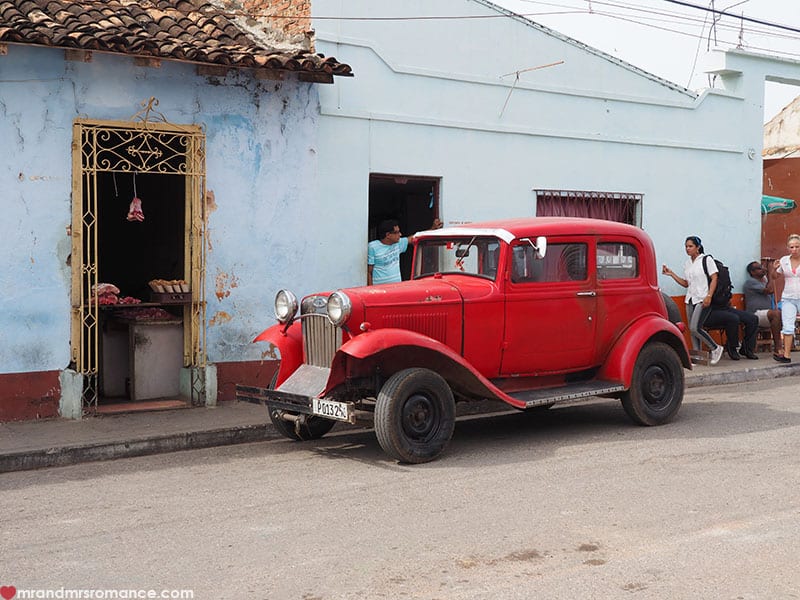
But it’s also notoriously known for being a bit unstable politically, and while crime is low here, you do need to go in armed knowing about the country’s history and why it can seem volatile to some people.
In this guide, we’re sharing our important Cuba travel tips, so you can visit this incredible and fascinating country without a hitch.
- Is Cuba friendly to tourists?
- Money Tips for Cuba
- 1. Take cash with you
- 2. Take Euros or GBP Sterling
- 3. Don’t take any other foreign currency
- 4. Cuba no longer has two currencies
- 7. Check to see if your bank has any American alliances
- 8. The best ATM to get money in Cuba
- 9. Every town will have two types of bank
- 10. Only one person at a time can be served in the bank
- 11. Tell your bank you’re going to Cuba
- Tips On Documentation for Travel to Cuba
- Packing Tips For Cuba
- Advice For Traveling Around Cuba
- Technology in Cuba
- How to Prepare For Your Trip to Cuba
- Final Thoughts
- More Cuba Travel Tips
- Pin To Save To Pinterest
Is Cuba friendly to tourists?
I’m not going to lie to you, Cuba is not an easy place to travel to. There are a handful of countries where you can fly direct to Havana from, making it hard to access for many people – so the hurdles go up immediately.
Can Americans go to Cuba? Yes, you can now travel to Cuba from USA and fly to Havana direct from the States, but flights are hard to come by and will always be the most expensive option.

What’s more, there seems to be very little helpful information about Cuba online, and everything you see seems to conflict with what you’ve just read before. This is why we created this guide to help you sort through the wheat and the chaff.
The hardest part is getting to Cuba, but once you arrive, you’ll find that Cuba is reasonably tourist friendly. Violent crime is rare, but pickpocketing is known to happen, so keep your belongings safe and don’t wander out of tourist areas.
One thing to be aware of is that English is not widely spoken outside of Havana or the big cities, but if you can speak basic Spanish you can get by. Regardless of the language barrier, Cubans are willing to help and interact with tourists.
Money Tips for Cuba
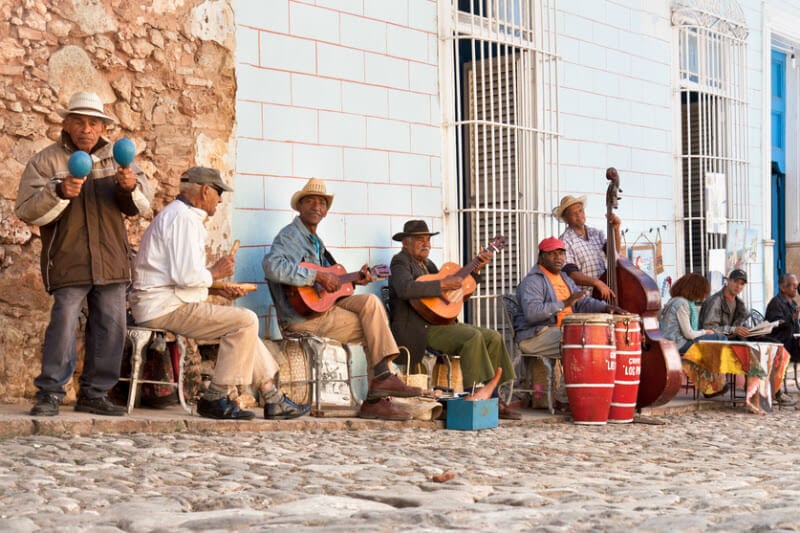
Let’s begin with money, since this will be your largest headache when visiting Cuba. Below are some advice for using money in Cuba…
1. Take cash with you
Even though things with the States are settling down now, it’s a good idea to take some hard currency on your trips to Cuba.
You can find ATMs in Cuba, but know that they don’t accept American debit or credit cards. There is a 3% withdrawal fee or credit card usage fee for most transactions.
In fact, most shops and card machines don’t accept American cards, so if you’re American, you’ll have no choice but to take US Dollar with you and exchange it.
2. Take Euros or GBP Sterling
If you’re not American, you can use your credit and debit cards without a problem, but if you would like to exchange cash, try to take Euros or British Pounds as these get the best exchange rate.
Use a travel credit card to pay for everything that you can, but know that some smaller, independent shops and restaurants may only accept cash.
3. Don’t take any other foreign currency
Aside from USD, Euros and Pounds, don’t take any other currency (Canadian Dollars might be accepted in some places, but not as desirable as the other currencies).
They don’t know what to do with them.
If you’re not American, don’t take American dollars, the exchange rate will be terrible plus you have to pay an extra fee every time.
If that’s your only option, sorry Americans, at least we warned you!
4. Cuba no longer has two currencies
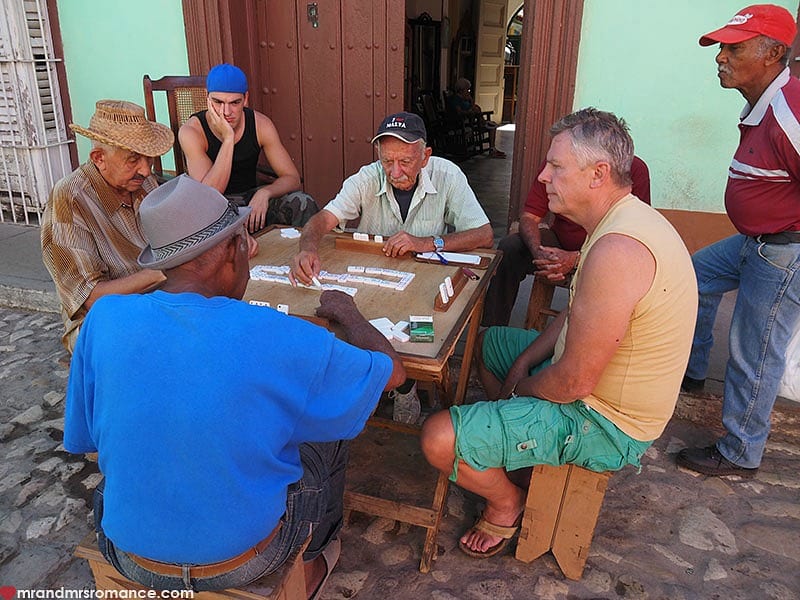
When tensions eased and Cuba allowed Americans to travel, they created two currencies; CUC (Cuban Convertible Peso or ‘Cuban dollar’) which was aligned to USD, which tourists must use. The second is CUP (Cuban Peso) which is for the locals.
Now, after two years, this has been scrapped. The only currency in circulation now is CUPs.
CUC bills are now worthless and not accepted. When you receive your change, make sure you check whether it’s an old bill or a new CUP.
7. Check to see if your bank has any American alliances
American Express and other American affiliated banks are blocked in Cuba, though most Visa, Euro and Mastercard credit cards do work if they are not American companies.
Make sure your bank doesn’t have an affiliation with the U.S., if it does, you might not be able to access your money regardless.
Get yourself a Revolut account or use Wise, which you can use as a backup.
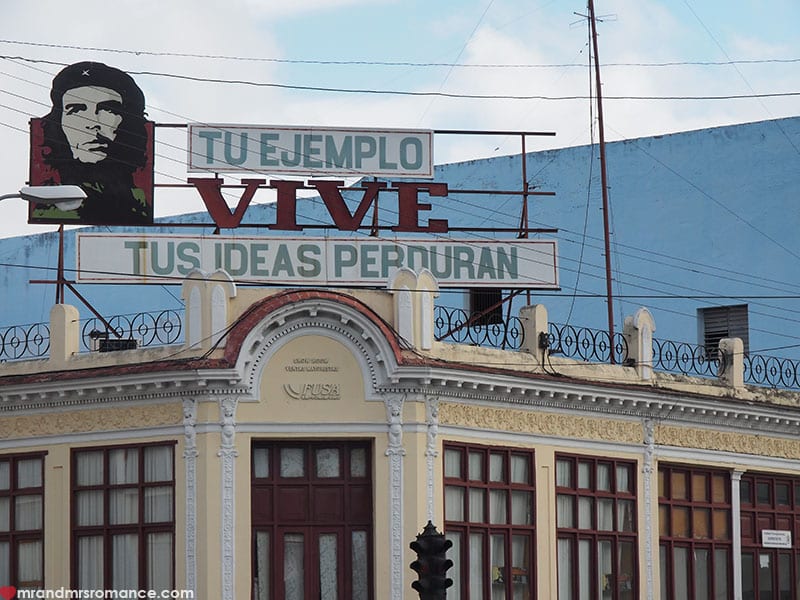
8. The best ATM to get money in Cuba
Try to get money out of the ATM upstairs on level 1 of Havana International Airport.
Avoid using the bureau de change at the airport though. They’re known to give incorrect change and the rates aren’t as good.
Hotels and resorts usually have a bureau de change.
9. Every town will have two types of bank
Banco de Cuba, which are proper banks, or Cadeca, which is like a currency kiosk. The bank usually gives better rates.
10. Only one person at a time can be served in the bank
If you’re traveling with a friend or your partner, flip a coin to see who goes! You can’t stand next to one another like you might do at an ATM or bank in your home country.
Towns usually have ATMs too – though some smaller places like Viñales don’t.

11. Tell your bank you’re going to Cuba
It’s a good idea to do this every time you leave your country anyway, but one of our top Cuba travel tips is that it’s even more important for this destination.
International calls are expensive and internet access is very limited.
If your bank thinks your cards are being used without your consent, they will cancel them on your behalf and leave you stranded.
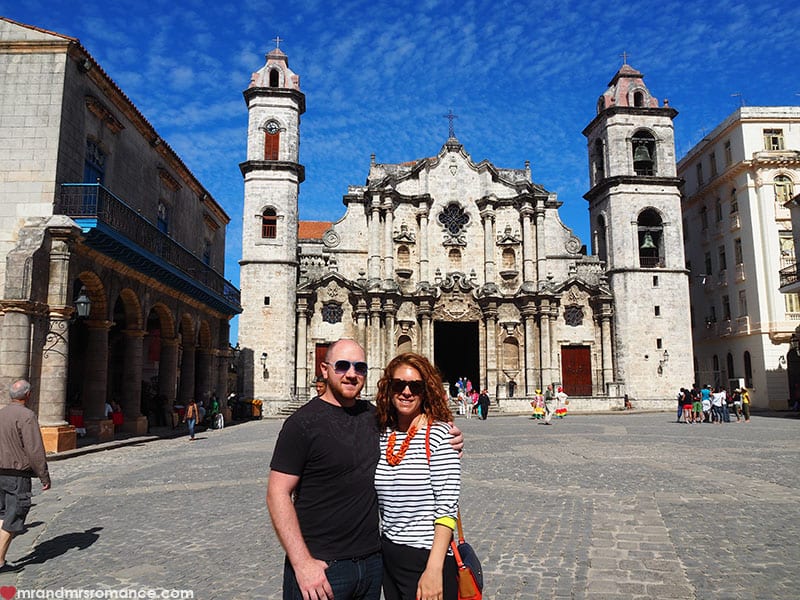
Tips On Documentation for Travel to Cuba
12. Get travel insurance for Cuba
You need to have travel insurance to travel to Cuba. They do spot checks at Customs and if you can’t produce policy documentation, they make you buy insurance there.
The credit card we use to buy flights has nominal travel insurance included. It doesn’t cover everything though but we took the gamble.
We weren’t checked going into Cuba.
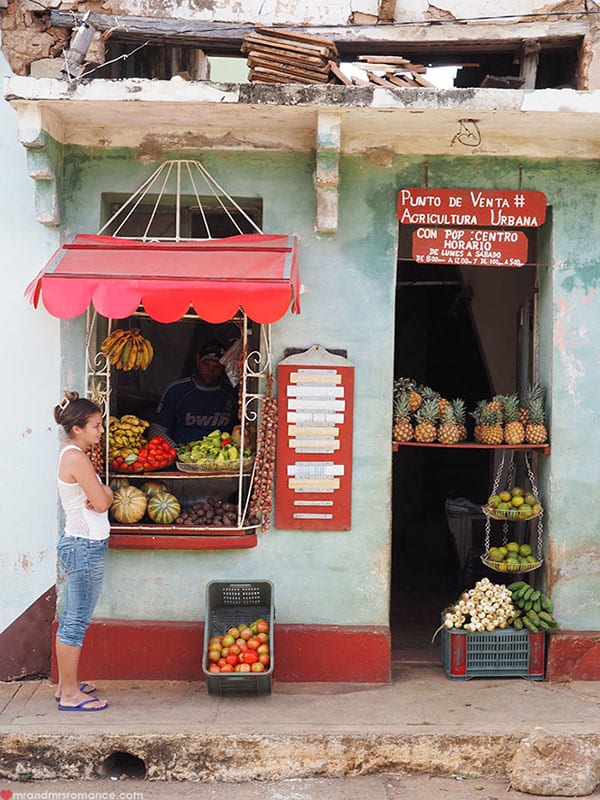
13. Print out any travel documents before you leave for Cuba
Technology is really hard to come by during travel in Cuba, and while some hotels will have a printer, they will probably charge you to use it.
If you need any travel documents while you’re in Cuba, or for your next destination, print them before flying to Havana.
14. Getting your Cuba Visa
Most nationalities require a visa for Cuba. For Americans, it’s the Pink Visa, for any other nationality, it’s the Green Visa. Some nationalities need only apply for a Cuba Tourist Card.
How to get a visa for Cuba? You can either buy yours through your local Cuban embassy or before checkin at a Cubana Air desk.
This is not always possible though. Not every airport has the Cuba visa service, so it’s better to be safe than sorry and get it online beforehand.
You can get your visa online here.
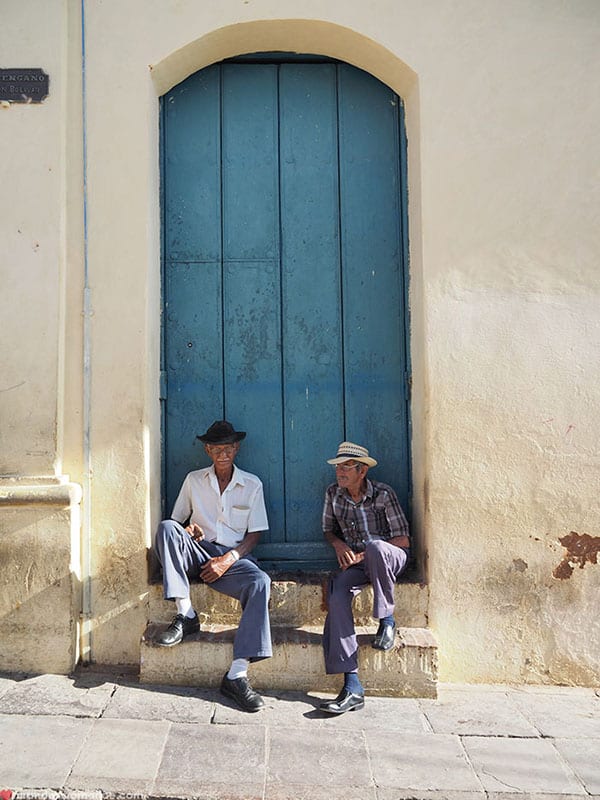
15. You no longer need a General License Affadavit
In case you didn’t notice from the different visa type, Americans have different rules and regulations for traveling to Cuba.
It was once the case that Americans need to get a general license affidavit, which is a document declaring that the reason they are visiting is of “meaningful purpose,” i.e., you’re visiting for tourism purposes.
This is no longer a legal requirement for Americans by the Office of Foreign Assets Control (OFAC), but some airlines like to check before you board a plane.
If you’re going with a tour company, this is usually completed as part of the tour package, but if not, you can find more information about it here.
16. Flights to Cuba
Get to the airport three hours before takeoff for both flights to Cuba, coming and going.
Cubana Air likes its passengers checked in at least an hour earlier than any other airline. Planes are often overbooked, so it’s worth that extra hour for peace of mind.
Read More: How to find cheap flights
Packing Tips For Cuba
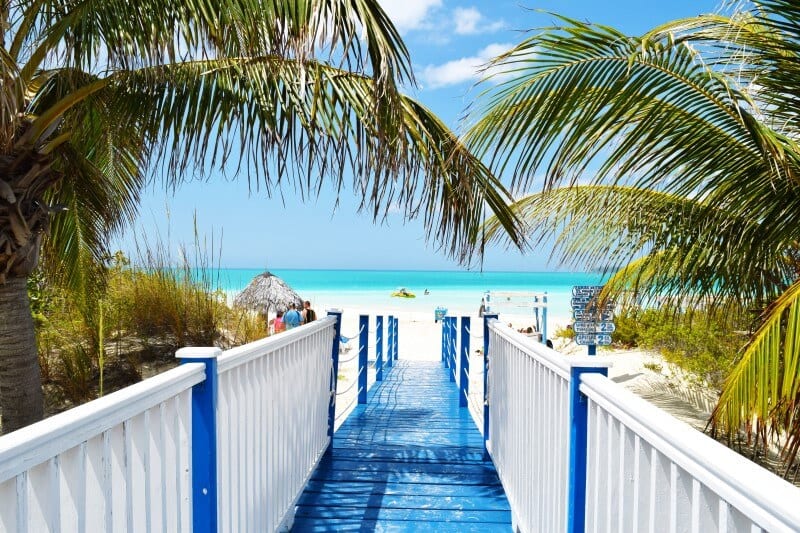
17. Travel as light as possible
When you fly to Cuba, if you can, go with cabin luggage only. We managed to and it was the best. We didn’t have to worry about losing our stuff or about it getting damaged.
We also saw other travelers struggling in and out of the tiny doorways of Cuban buildings and up tight staircases with their enormous bags, which looked like a nightmare.
18. Pack toilet paper and sanitary products
Cuba doesn’t have much in the way of soaps, sanitary products, and even toilet paper.
We recommend you pack these items, including hand sanitizer and body wash etc, as it won’t be easy to come by in Cuba.
19. Take all medications you need
Pharmacies in Cuba are not well stocked as basic medicines are hard to obtain in Cuba.
We recommend you take all medications you need with you, as well as the usual preventative meds like paracetamol, diarrhoea tablets, allergy pills etc.
Advice For Traveling Around Cuba

20. Use collectivos (shared taxis)
The best way to get around Cuba is to take the collectivos, which are like shared taxis that travel from city to city.
You can usually order one with your hotel.
21. Gifts and bartering in Cuba
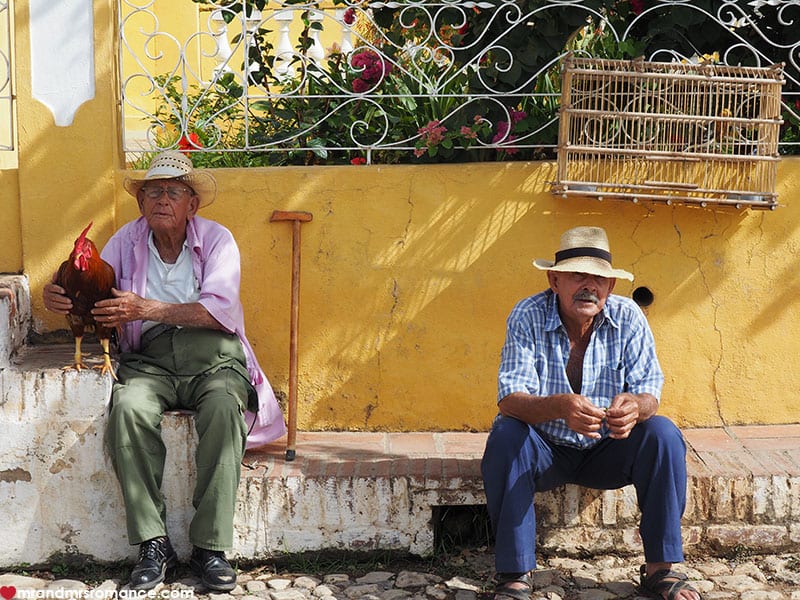
There’s a lot of talk about having pens to give to people in place of money. There is a barter system in Cuba, but not for pens.
Kids love to have pens, but there won’t be a mad scramble if you produce a chewed up Biro.
We saw a man trade a bar of hotel soap for cigars once, and there seems to be a shortage of tinned tuna in Cuba – it’s one of the most expensive things to eat there.
Otherwise, clothing with American brands on it is a popular item to trade, as is anything to do with baseball.
22. Food in Cuba isn’t great; take seasoning
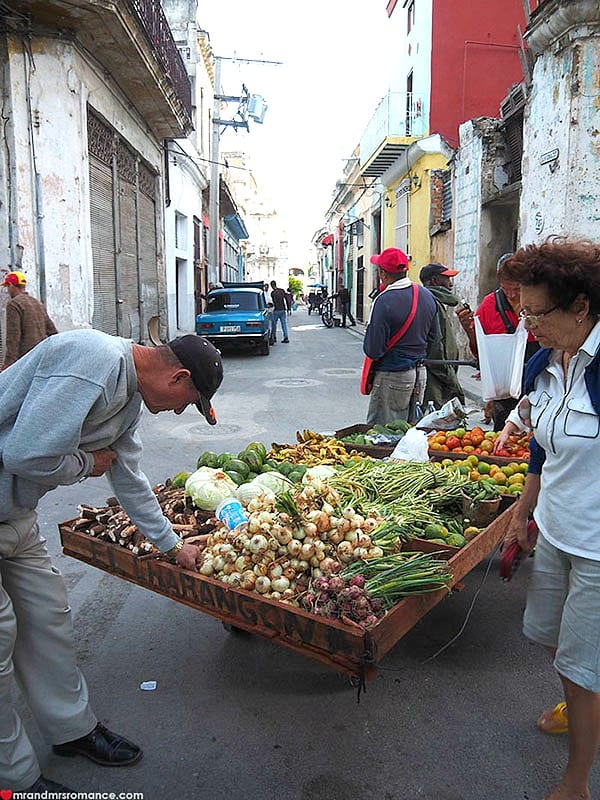
Due to restrictions in trade, Cuban food isn’t the best – though it’s not the worst either. It’s usually just a bit bland.
Take a little salt with you or – as our friend did – take a bottle of sauce with you.
He took some Sriracha, which was almost all gone after two weeks!
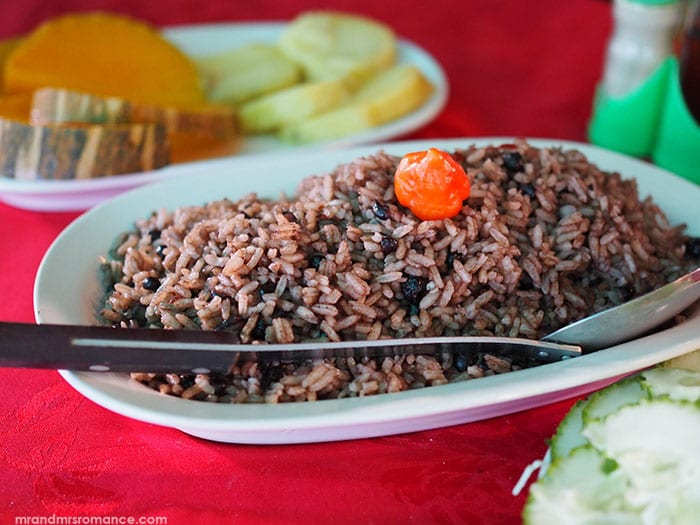
23. Drink bottled water
Although they say the water is treated in Cuba, we don’t recommend you drink it. Use bottled water for brushing your teeth and only drink bottled water.
Be careful when you eat street food, as sometimes the fruit can be washed in tap water instead of bottled water.
Be careful when ordering ice with your drinks. Make sure it has a hole through it, so you know is has been treated.
Technology in Cuba
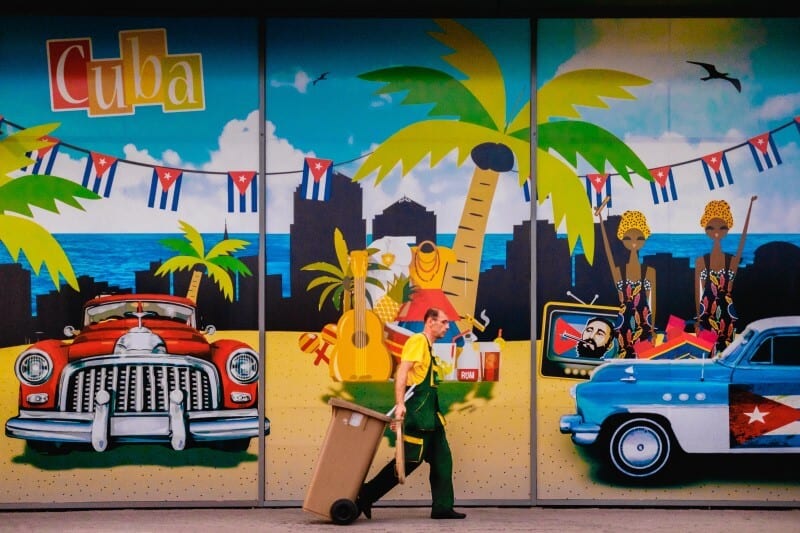
24. Cuba internet isn’t great (and some sites blocked)
The internet isn’t great in Cuba. It’s restricted and censored by the government, and so some sites cannot be accessed in Cuba.
Don’t worry, Netflix is not one of the sites that’s blocked!
WiFi signal tends to be good enough for browsing but not always the strongest.
The signal strength is also not great, but you can still use your smartphone to get around.

I recommend you download MapsMe or another offline GPS like Galileo, which allows you to use your phone’s GPS to show where in the world you are.
You need to download maps onto the app first before you get to Cuba and go offline.
25. Get a local sim card
To stay connected in Cuba, get a local sim card. The one with the best coverage is the Cubacel Tur SIM Card, which you can get from the airport.
If your phone supports an eSIM, Airalo have an eSIM deal for 7 days, 1GB, which should be enough for general internet searches and using the map.
26. Follow Cuba Junky

Cuba Junky is a brilliant blog, which tells you a lot about the country. This guy also has maps of Cuba with each Casa Particulare – a type of homestay popular with tourists in Cuba – noted on the map.
You can upload these maps onto Galileo (see my previous note) and use your GPS to navigate around.
How to Prepare For Your Trip to Cuba
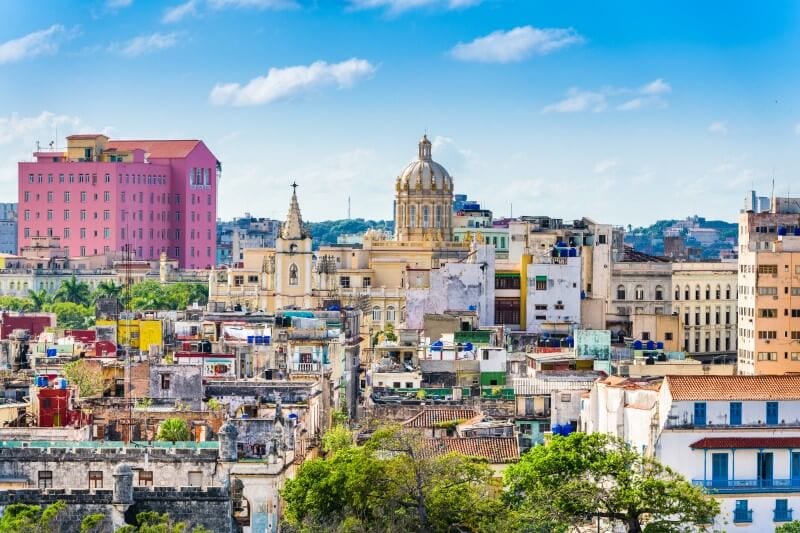
27. Know the best time of year to visit Cuba
As with any destination, there are good and better times of year to visit Cuba.
The best time of year to visit Cuba is between mid November and March, when it is the cooler dry season – this is usually a busier time of year due to the lower temperatures and humidity level.
When NOT to go to Cuba? May and June is the wet season and when things get a bit sweaty in Cuba, but things happen like the tobacco is harvested and carnivale, which are one of the most popular highlights of the Cuban calendar.
July to early November is hurricane season, when things can get a bit windy.
28. Book your first night’s accommodation in Cuba
Not sure where to stay in Cuba? Make sure you have your first night’s accommodation booked and if you like it you can extend, or move somewhere else.
It’s not a good idea to arrive in Cuba with no plan of where you want to sleep that night. Make sure your first night at least is covered.
The best site to book hotels and casas particulares (local homes) in Cuba is Expedia.
29. Book Cuba tours before you leave

As we’ve mentioned before, the internet is hard to come by in Cuba. Searching for tours in Cuba and other paid-for activities while you’re there will be difficult and costly.
We booked a small group tour with Cuban Adventures before we left and it proved to be the best decision.
- Here’s a great group tour of Cuba for those who don’t want to travel alone with G Adventures
- Exploring Cuba’s Culture, History, and Colonial Cities (10 day trip with Globus) Use our discount below.
GLOBUS DISCOUNT JUST FOR YOU!
We’ve secured an exclusive yTravel discount: Save $100 per person on select 2024 Globus and Avalon Waterway Vacations. Use the code: YTRAVEL when booking online at the Globus, Cosmos, and Avalon Waterways websites, by calling Globus and Avalon Waterways directly, or booking with a preferred Travel Advisor. Terms & Conditions.
30. Choose your tour based on itinerary

If you want to join a tour, you will need to think about how long you want to be traveling and create your list of places to visit in Cuba.
Don’t worry too much about promised services or extras. Most tours use the same agency for the tour guides.
31. Learn as much Spanish as you can
One of our helpful Cuba travel tips is to learn a little of the local language.
Even simple words and sentences will go a long way in Cuba. Cuban people love to talk to you and if you know a little of their lingo, they’ll be even friendlier.
It also helps if you’re staying in casa particulars so you can speak to your generous hosts.
32. Take salsa lessons

Everyone in Cuba knows how to salsa. Even if you just learn the basic steps, you won’t feel left out stood at the edge of the dance floor while everyone else is enjoying themselves.
You can take lessons in Cuba while you’re there, but by then it might be too late.
Final Thoughts
The most important thing to remember to do while you’re in Cuba is to have fun.
Cuba is not a dangerous country, as many people think. Crime rates are not high, and petty crime is rare. There is a lot of bureaucracy here though, which makes traveling hard.
Providing you use your common sense and look out for scams on the streets in Cuba, behave with respect for the local culture, you’ll have the best time in Cuba.
More Cuba Travel Tips
Need more inspiration for your trip to Cuba? Here are some other helpful guides…
- Places to visit in Cuba and one to avoid
- Amazing cities in Cuba to visit
- 4 Day Cuba Itinerary: Explore Beyond Havana
- The Pros and Cons of Cuba Travel (+ Concerns and Logistics)
- How to Travel to Cuba On A Group Tour (and have fun)
- 5 Amazing Cities in Cuba to Visit That Will Imprint Your Heart
Pin To Save To Pinterest
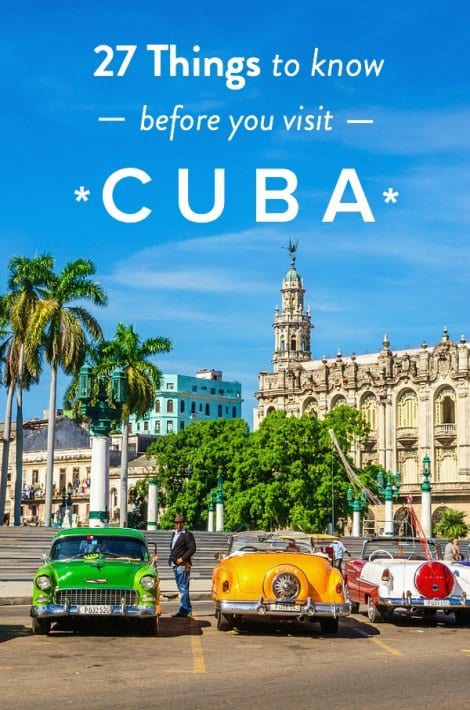
Have you already visited Cuba? If yes, share some your best Cuba travel tips in the comments!

